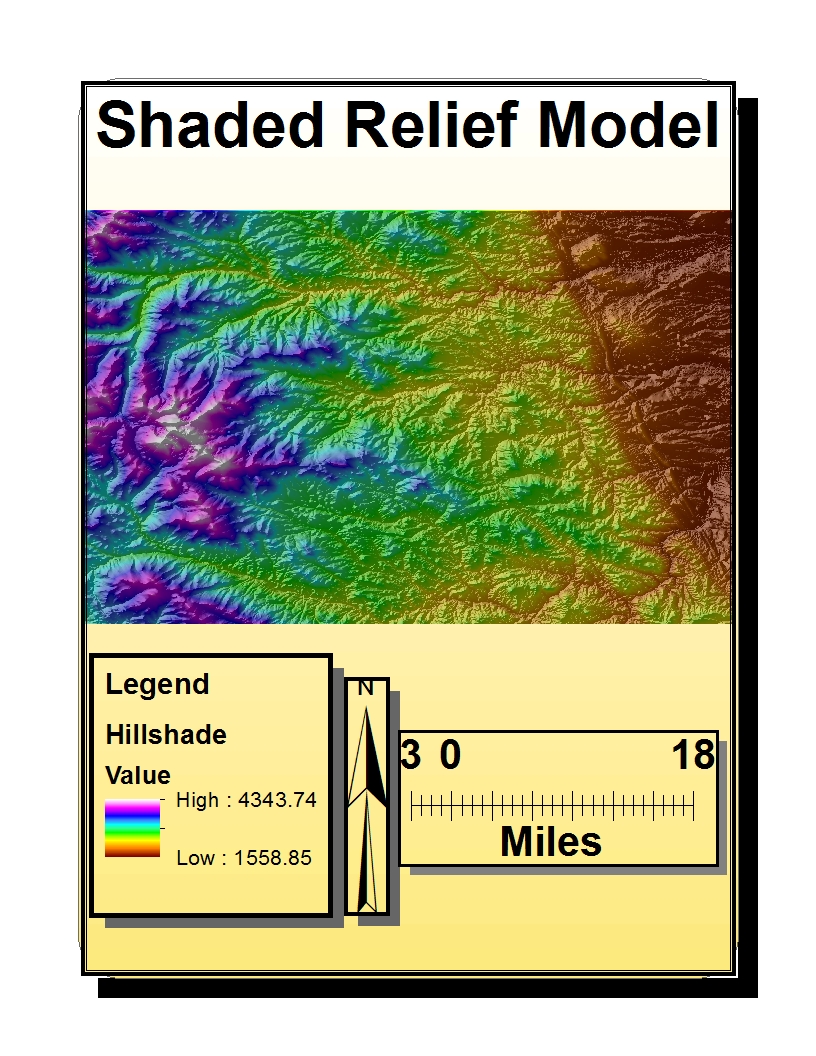This week’s lab concluded our work with ArcGIS by constructing maps concerning the Station Fire of 2009. Centered in Los Angele’s San Gabriel Mountains, the Station Fire that started on August 26th 2009 quickly became one of southern California’s largest fires in history after it scorched over 160,000 acres of land. Looking to be the work of arson, at one point “the Board of Supervisors of the County of Los Angeles ha[d] established a reward in the amount of $50,000 for any information leading to the apprehension and/or conviction of the person or persons responsible for the heinous actions that lead to a major disaster known as the ‘Station Fire’” (Angeles National Forest). Angeles National Forest’s website points out that fires of such proportion are not really put out for several weeks or months.
To display the extent of the fires, the first map shows the perimeter of the fires from August 29th to September 1st. Red is for August 29th, yellow for August 30th, orange for August 1st and brown for September 1st. The lime green with orange outline polygon surrounding the fire extent is the Los Angeles National Forest preserve. Because the fire grew so fast and was in areas with unpredictable debris that could contribute to fuel, firefighters had to work fast and for long hours. California Chaparral Institute claims that before the fire, “…there [were] approximately 10,000 acres of fuel treatments and more than 160 miles of fuel breaks within the Station Fire perimeter”. Conflict around how the fires began, spread so fast, or were responded to initiated remarks about federal services and responsibilities, where a rebuttal statement deferred responsibility by saying, “Huge wildfires will occur in Southern California regardless of how the government ‘manages’ its lands…they are an inevitable part of life here.” Some studies have concluded that processes of controlled fire burning within the Station Fire region would not have prevented the outcome of the fire extent.
Reports have noted the Station Fire area had not burned for an extended period of time, and that much of the area was within a consistent cycle of fire rotation for wildlands. Richard Halsey said, “the main reason this fire spread as quickly as it did [is that it] had more to do with current long term drought conditions and the steep terrain than the age of the vegetation” (California Chaparral Institute). In my second map, I show a digital elevation diagram (high elevation values are red) and a temperature map (high temperatures in red) based on figures from August 31st. These two diagrams help correlate elevation and temperature parameters of the Station Fire. Immediate observation shows high temperatures in most elevation ranges but slightly lower temps in the highest elevation points. High elevation and emerging winter characteristics helped firefighters combat the fire at high altitudes (Angeles National Forest). When carrying capacities are reached and exceeded, ignition in wildlife settings can occur. This is an effect that happens when through crowded settings and can be likened to having an overloaded grid ignite before a match lights life ablaze (Malamud et.al).
Seeing how a large portion of Los Angeles and a national forest preservation were destroyed can allow scientists and curious researchers the ability to question how fires spread in unique ways. Richard Rothermal is a practiced environmentalist who has created a mathematical model that predicts spread in wildland fuels. Although Rothermal has contributed significantly to the theory of fire spread, his models lack certain variables such as accelerated debris, spotting, and fire whirls. Eager problem solvers can add to Rothermal’s forty year old prediction model which will hopefully eliminate guesswork during future catastrophic situations. In this way, we may be able to come to a better formed conclusion that challenges ideas that the Station Fire would have occurred regardless of conditions that lead to self-ignition and the spread pattern which happened mostly in a chaparral area.
In all, the Station Fire of 2009 proved to be a remarkable fire that burned homes, land, and took lives of fire fighters relieving the incident. A fire that started by arson and spread quickly, my first map shows how the Station Fire extends to about 35 percent of the forest outlined and about 10 percent of Los Angeles. My second map relates temperature to elevation showing that except for in the highest elevations, temperature is high and evenly spread. Peaking at 406 degrees, such temperatures show the direct force of the fire itself, shedding insight into how difficult fighting fires really are. Taking into account claims by Malamud et.al where overloaded habitats increase potential for self-ignition and ideas from the California Chaparral Institute that fallowed land in the San Gabriel Mountains was bound to burn based on historic cycles, then we can gather protection of such lands is almost futile as nature would have claimed what humans did not.
Works Cited
California Chaparral Institute. “The 2009 Station Fire in the Angeles National Forest”. (4 September 2009). Retrieved from http://www.californiachaparral.com/2009fireinlacounty.html
Hanes, Ted L. “Succession after Fire in the Chaparral of Southern California.” Ecological Monographs 41.1 (1971): 27-52. JSTOR. Web. 17 March 2013.
Malamud, Bruce D.; Morein, Gleb; Turcotte, Donald L. “Forest Fires: An Example of Self- Organized Critical Behavior.” Science Journal 281.5384 (1998): 1840-1842. JSTOR. Web. 19 March 2013.
Rothermal, Richard C. “A Mathematical Model For Predicting Fire Spread in Wildland Fuels.” U.S. Department of Agriculture INT-115 (1972): 1-40. JSTOR. Web. 17 March 2013.










_Sinusoidal_Equal.Area_II.jpg)
_Equal.Area_Cylindrical_II.jpg)
_Two-Point_Equidistant_II.jpg)
_Equidistant_Conical_II.jpg)
_Miller_Cylindrical_Conformal_II.jpg)
_Mercator_Conformal_II.jpg)

